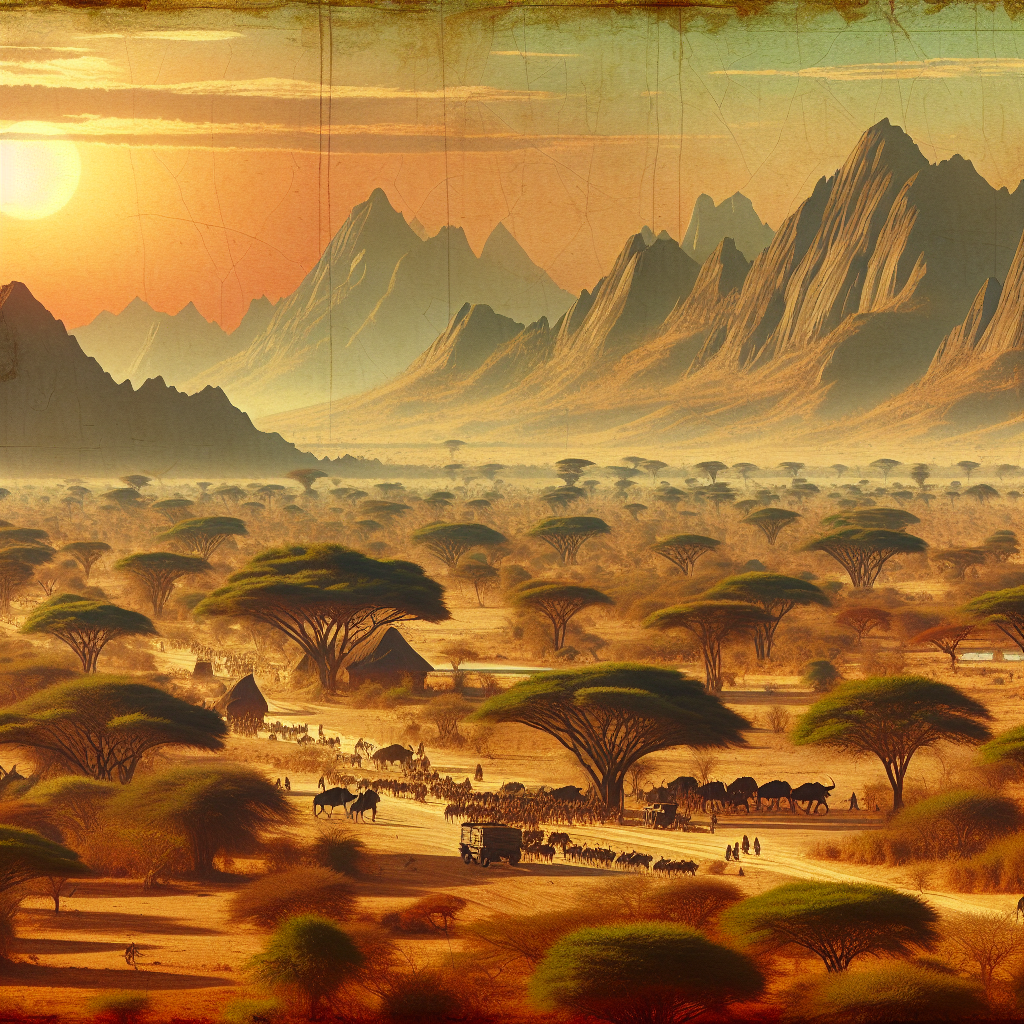Imagine a sea of golden grasses stretching far beyond the horizon, dotted with acacia trees, already setting the stage for an epic battle of survival between nature and the elements. This is the West Sudanian Savanna, a vibrant ecological region in West Africa encompassing parts of countries like Senegal, Mali, Burkina Faso, and Nigeria. Home to a vast array of wildlife and rich cultures, the savanna is caught in the whirlwind of climate change and human habitation. This biome arose thousands of years ago due to climatic fluctuations, and today it stands as a testament to nature's resilience, although it faces mounting threats.
This land is the beating heart of biodiversity. Gazelles sprint through wide expanses, while lions lurk in the shadows, embodying the circle of life in its most raw and poetic form. Birds of every hue fill the skies, and beneath the earth, a network of roots shares resources, supporting each other in a botanical boomtown. The West Sudanian Savanna serves as a crucial habitat where species adapt and thrive despite the odds. Here, you can find the majestic African elephant, the elusive leopard, and many endangered species that rely on the savanna's unique ecosystem.
The savanna's natural wonder is matched by its cultural wealth. Indigenous communities have long called this land home, drawing from its resources while contributing to its cultural tapestry. The people are as much a part of the landscape as the animals and plants, using age-old methods to coexist within their environment. However, this delicate balance is increasingly strained. The pressure comes from both natural phenomena and human-induced changes, such as climate change and land use conversions.
Climate change poses a significant threat to the West Sudanian Savanna. Rising temperatures and shifting precipitation patterns disrupt the ecological harmony. This affects the availability of resources and results in habitat loss. As regions around the savanna experience longer dry seasons and increased frequency of droughts, the plant and animal life must adjust quickly to survive. For communities relying heavily on agriculture, these changes make fulfilling basic needs an exercise in unpredictability.
Human encroachment is another sobering reality. As nearby populations grow, more land is being converted for agriculture and urban development. This raises a critical issue: how to sustain human progress while preserving nature's bounty. The binary choice often presented between development and conservation overlooks creative and sustainable solutions that might emerge from recognizing interconnectedness. Redefining progress in a way that respects the planet could lead to ideas that benefit both humans and the ecosystem alike.
Some argue that using land for agriculture and development is necessary for economic growth and tackling poverty. Yet there's a mounting voice in favor of sustainable practices that honor the land's historical and ecological value. By focusing on technologies and strategies that enhance rather than deplete natural resources, it might be possible to support human communities without compromising the environmental integrity of the savanna.
Efforts are underway to address these issues. Conservation initiatives strive to establish protected areas while involving local communities in the stewardship of their lands. International organizations, governments, and NGOs work on projects promoting sustainable land-use practices and reforestation. These projects often aim to strike a balance by integrating traditional knowledge with modern science.
Education plays a pivotal role in these efforts. Awareness campaigns highlight the savanna's plight and teach locals and global citizens alike about the importance of preserving this unique habitat. Equipping young minds with knowledge about the environmental challenges and how they can contribute to a solution is vital. Combining education with practical tools encourages innovative thinking and problem-solving among the new generations.
This appeal to empathy and action is urgent. Preserving the West Sudanian Savanna isn't just about maintaining biodiversity or protecting the land for its intrinsic value—it's about securing a future where natural beauty and cultural richness continue to flourish. By joining hands across borders and ideologies, and by fostering collaboration rather than division, resilience can be built against the challenges posed by climate change and human activity.
Beyond its natural riches, the savanna holds lessons in adaptability and interconnectedness that are universally relevant. While our world debates how best to move forward in the face of drastic environmental changes, the stories drawn from this region could inspire solutions on a global scale. Learning from and supporting places like the West Sudanian Savanna isn't just an act of charity—it's a necessary step towards healing our interconnected planet.

